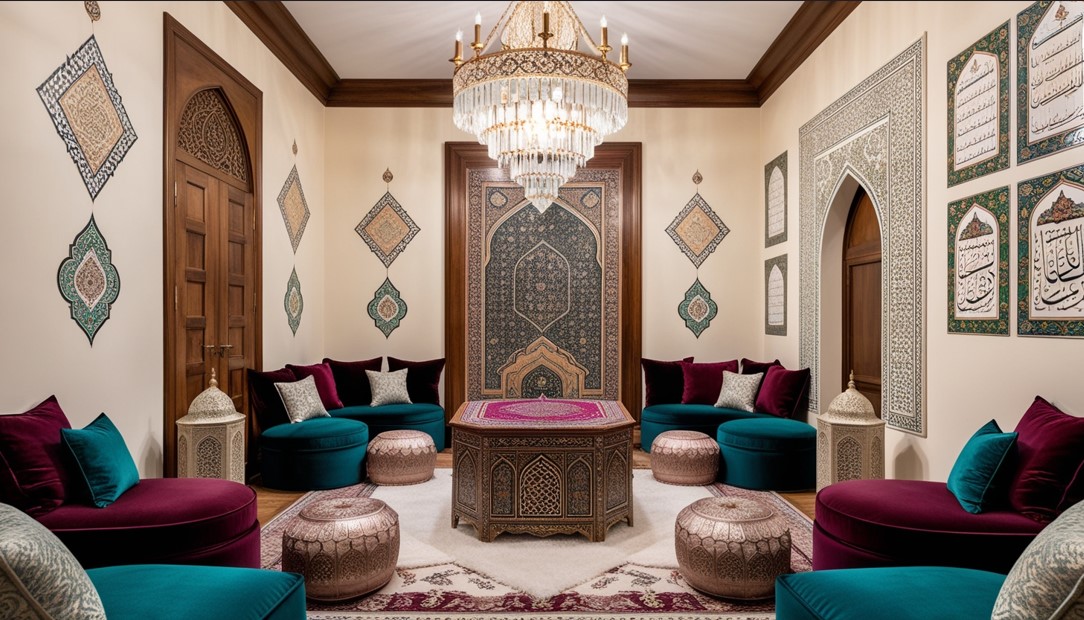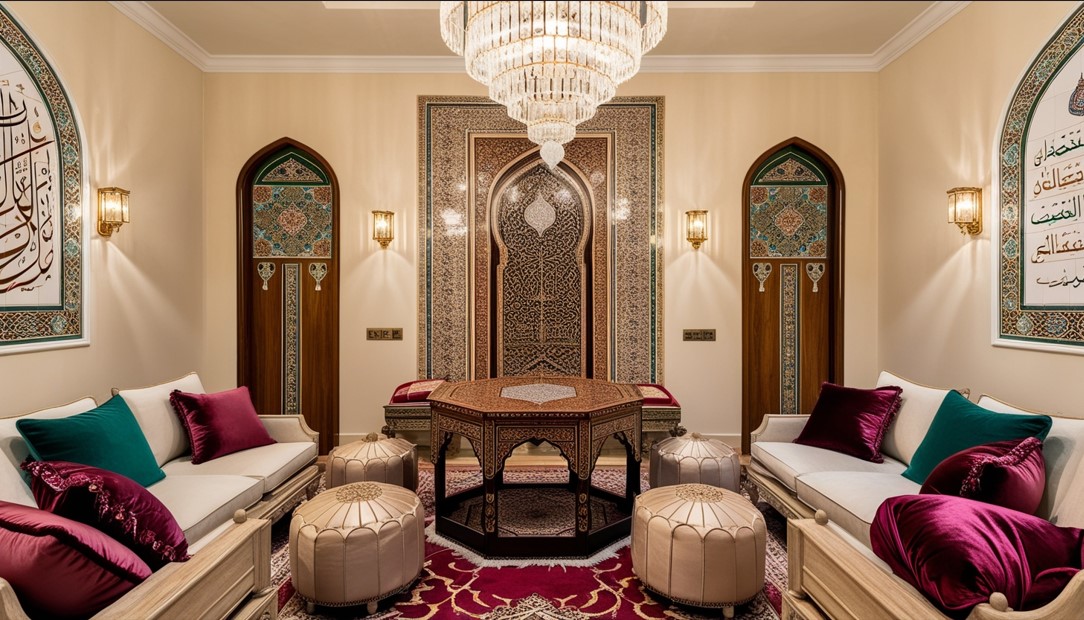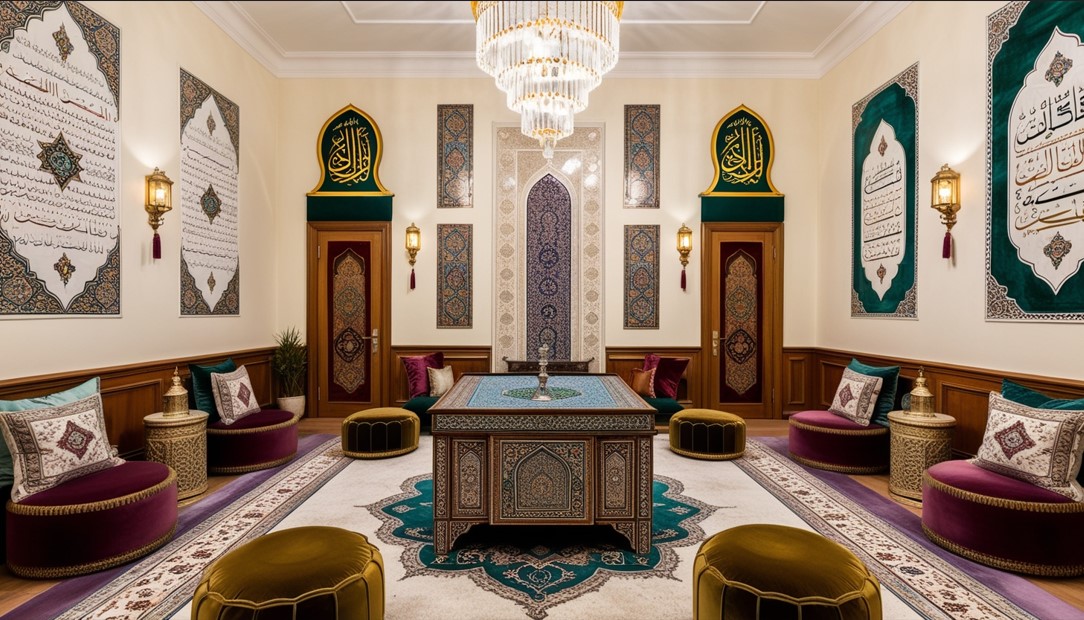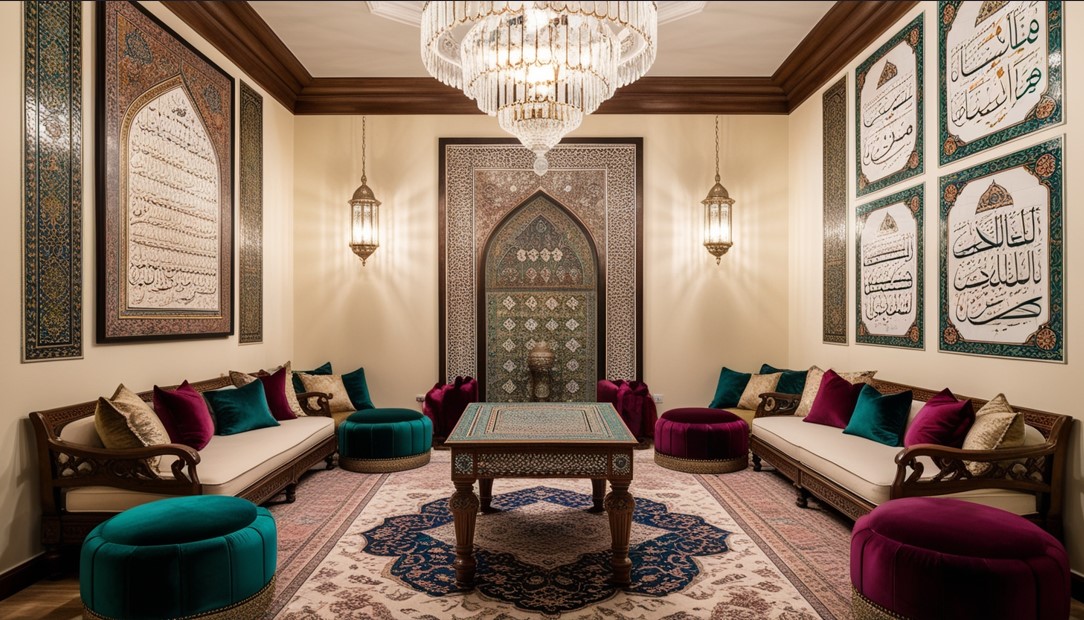Islamic home decor combines timeless aesthetics, cultural richness, and spiritual depth, creating beautiful and meaningful environments. This style is rooted in centuries of Islamic history, art, and architecture and expresses harmony, balance, and divine beauty. Islamic decor can be integrated into any modern home, bringing peace, tranquility, and cultural elegance to every room.
In this article, we will explore Islamic home decor’s core principles and features, its unique characteristics, and how to incorporate Islamic design elements into your home for a spiritually enriching and aesthetically pleasing living space.
Understanding Islamic Home Decor
Islamic home decor is deeply connected to the principles and traditions of Islamic culture. The goal is to create a space that reflects the divine beauty of Allah (God) and promotes peace, serenity, and spiritual well-being. From intricate geometric patterns to Arabic calligraphy, Islamic home decor draws inspiration from the rich cultural history of the Muslim world. Let’s explore what makes this style uniqLets. The Core Principles of Islamic Home Decor
Islamic decor is often characterized by several key elements deeply rooted in the religion and its cultural values. Here are some of the fundamental principles:
- Monotheism and Spirituality: Islamic home decor is designed to reflect the oneness of Allah and the peaceful and balanced nature of Islamic teachings. Items such as Quranic verses or motifs symbolizing spirituality are frequently incorporated into home decor.
- Balance and Symmetry: Islamic art emphasizes harmony, symmetry, and balance, which is reflected in home decor through evenly arranged patterns and designs. These elements help create a peaceful and calming atmosphere in the home.
- Calligraphy and Quranic Verses: Arabic calligraphy is prominent in Islamic home decor. Verses from the Quran, Islamic prayers, or names of Allah can be beautifully inscribed on walls, textiles, or other decor items. This practice is a constant reminder of faith and spirituality.
- Geometric Patterns: Intricate geometric patterns are a hallmark of Islamic design. These designs, often created using squares, circles, and stars, reflect the infinite nature of God and are widely used in wall art, textiles, and furniture.
- Natural Materials: Islamic decor often emphasizes using natural materials like wood, stone, and metal. These materials reflect the natural world and the belief in the beauty and balance of creation.

2. Key Elements of Islamic Home Decor
Islamic decor is rich in cultural history, and its aesthetic is built upon several elements that can be easily integrated into modern home designs. Here are some of the key features that define Islamic home decor:
1. Arabic Calligraphy
Arabic calligraphy is one of the most significant aspects of Islamic home decor. It is used to inscribe verses from the Quran or Islamic phrases such as “Bismillah” (In the name of Allah) or “A “hamdulill” h” (Praise be to Allah). These inscriptions are often framed as wall art, adorning various home areas, from living rooms to bedrooms.
Calligraphy in Islamic decor is decorative and reminds one of faith and piety. Calligraphic art can be bold and contemporary or traditional and ornate, depending on your preference and home style.
2. Geometric Patterns and Motifs
Islamic art is well-known for its intricate geometric patterns and motifs. These patterns, which often include complex, symmetrical designs such as stars, hexagons, and arabesques, are deeply symbolic. They reflect the Islamic belief in the perfection of Allah’s creation and the concept of infiAllah’s space. Geometric designs can be found on carpets, tiles, wall art, and furniture.
Geometric patterns in home decor can create a visually captivating and peaceful ambiance. Symmetry and balance are key components in Islamic art, and these patterns evoke feelings of serenity and connection with the divine.
3. Tiles and Mosaics
Decorative tiles are popular in Islamic home decor, especially in kitchens, bathrooms, and entryways. Often showcasing vibrant colors and geometric patterns, tiles add a sense of richness and depth to the space. Mosaics are also commonly used in Islamic design, especially on walls or as accent features.
These tiles often feature intricate arabesque designs and create focal points in rooms, such as a decorative wall, flooring, or a statement backsplash.
4. Lanterns and Lighting
Lighting plays a significant role in creating the right atmosphere in Islamic home decor. Traditional Islamic lanterns, known as “fanous,” often add a warm, old-fashioned glow to the home. These lanterns are typically made of metal and glass, featuring intricate designs that cast beautiful, patterned shadows when lit.
Modern Islamic-inspired lighting fixtures, such as pendant lights, chandeliers, and sconces, often incorporate geometric designs and Arabic motifs. Lighting is not only functional but is an essential decorative element that helps set the mood in your home.
5. Wooden and Metal Furniture
In Islamic design, furniture features natural materials such as wood and metal. Wood is prized for its natural beauty and warmth, while metalwork adds an element of craftsmanship and intricate design. Furniture pieces such as wooden side tables, chests, and cabinets are often carved with elaborate geometric patterns or Quranic verses, adding a rich cultural touch to the space.
Iron or brass elements, like metal-framed mirrors or decorative metal trays, are also commonly used in Islamic home decor. Blending wood and metal gives the room a timeless and elegant feel.
6. Rugs and Carpets
Handwoven rugs and carpets are an essential part of Islamic home decor. These functional carpets are often beautifully adorned with geometric patterns, calligraphy, and symbolic designs. In Muslim homes, rugs create prayer spaces or add warmth and comfort to the floor.
Traditional Islamic carpets are often made with high-quality materials such as silk or wool and feature rich red, blue, gold, and green colors. These rugs can be placed in living rooms, bedrooms, or prayer areas to add texture, color, and spirituality.

3. How to Incorporate Islamic Home Decor into Your Space
If you are looking to bring Islamic decor into your home, there are various ways to do so while still maintaining a modern or eclectic design. Here are some ideas on how to incorporate Islamic home decor into your living space:
1. Accent Walls with Arabic Calligraphy
An accent wall adorned with Arabic calligraphy creates a stunning focal point in any room. Choose a verse from the Quran or an Islamic saying that resonates with you. Paint it directly onto the wall or frame it as artwork. Calligraphy adds an elegant touch while allowing you to connect spiritually with your home environment.
2. Incorporate Geometric Tiles
Tiles with geometric patterns can elevate the look of your kitchen, bathroom, or hallway. They can also create a striking feature wall or backsplash that adds function and beauty. You can opt for traditional Islamic-style tiles or more modern interpretations of the designs.
3. Use Lanterns and Candle Holders
Install lanterns, chandeliers, or pendant lights with intricate patterns that cast shadows and create a warm ambiance. You can also use small lanterns as table centerpieces or place them near your entryway to create a welcoming atmosphere.
4. Wooden Furniture with Intricate Carvings
Invest in wooden furniture such as cabinets, bookshelves, and side tables with beautiful carvings or inlays. These pieces will add texture and sophistication to your home while maintaining Islamic design’s spiritual and cultural richness.
5. Layer Rugs and Textiles
Layer several handwoven rugs with intricate designs to create a sense of warmth and comfort in your living room or bedroom. Islamic-style rugs and carpets come in a wide range of designs and colors, allowing you to choose the ones that complement your existing decor.

FAQs About Islamic Home Decor
Can Islamic home decor be modernized?
Yes, Islamic home decor can easily be modernized while maintaining its traditional elements. For example, minimalist geometric designs or contemporary calligraphy can give a modern twist to classic Islamic decor.
What are some common symbols in Islamic home decor?
Common symbols include geometric patterns, stars, crescents, Arabic calligraphy, and floral motifs. These symbols are often used to convey spiritual and divine meanings.
Is Islamic decor suitable for all types of homes?
Yes, Islamic decor can be adapted to fit various home styles, from traditional to modern homes. Integrating elements such as geometric patterns, wooden furniture, and calligraphy to complement your overall design is key.
How can I use Islamic decor for a peaceful ambiance?
Focus on balance and symmetry, key elements of Islamic design, to create a peaceful ambiance. Use soft lighting, calming colors, and meaningful calligraphy to enhance tranquility in your home.
Are there specific materials used in Islamic home decor?
Islamic home decor often uses natural wood, stone, metal, and textiles. These materials are chosen for their aesthetic appeal and connection to the natural world.
Conclusion
Islamic home decor is a beautiful fusion of spirituality, culture, and design. You can create a home that reflects divine beauty and peace by incorporating elements such as Arabic calligraphy, geometric patterns, and rich textures. Whether you’re drawn to traditional or modern interpretations of Islamic design, this style brings a unique, spiritual, and elegant charm to any living space.

